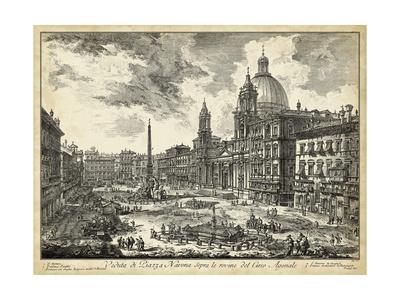
It features important sculptural creations: in the centre stands the famous Fontana dei Quattro Fiumi or Fountain of the Four Rivers (1651) by Gian Lorenzo Bernini, topped by the Obelisk of Domitian, brought in pieces from the Circus of Maxentius the church of Sant'Agnese in Agone by Francesco Borromini, Girolamo Rainaldi, Carlo Rainaldi and others and the aforementioned Pamphili palace, also by Girolamo Rainaldi, that accommodates the long gallery designed by Borromini and frescoed by Pietro da Cortona. Very little of it remains today.ĭefined as a public space in the last years of 15th century, when the city market was transferred there from the Campidoglio, Piazza Navona was transformed into a highly significant example of Baroque Roman architecture and art during the pontificate of Innocent X, who reigned from 1644 until 1655, and whose family palace, the Palazzo Pamphili, faced the piazza. Following the Fall of the Western Roman Empire, the stadium fell into ruin, being quarried for building materials. The space currently occupied by the Piazza Navona was originally the Stadium of Domitian, built by Emperor Titus Flavius Domitianus in 80 AD. History Fountain of the Four Rivers Fontana dei Quattro Fiumi Fontana del Moro, on the southern end It is believed that over time the name changed to in avone to navone and eventually to navona. The ancient Romans went there to watch the agones ("games"), and hence it was known as " Circus Agonalis" ("competition arena").


It is built on the site of the Stadium of Domitian, built in the 1st century AD, and follows the form of the open space of the stadium.

Piazza Navona ( pronounced ) is a public open space in Rome, Italy.


 0 kommentar(er)
0 kommentar(er)
